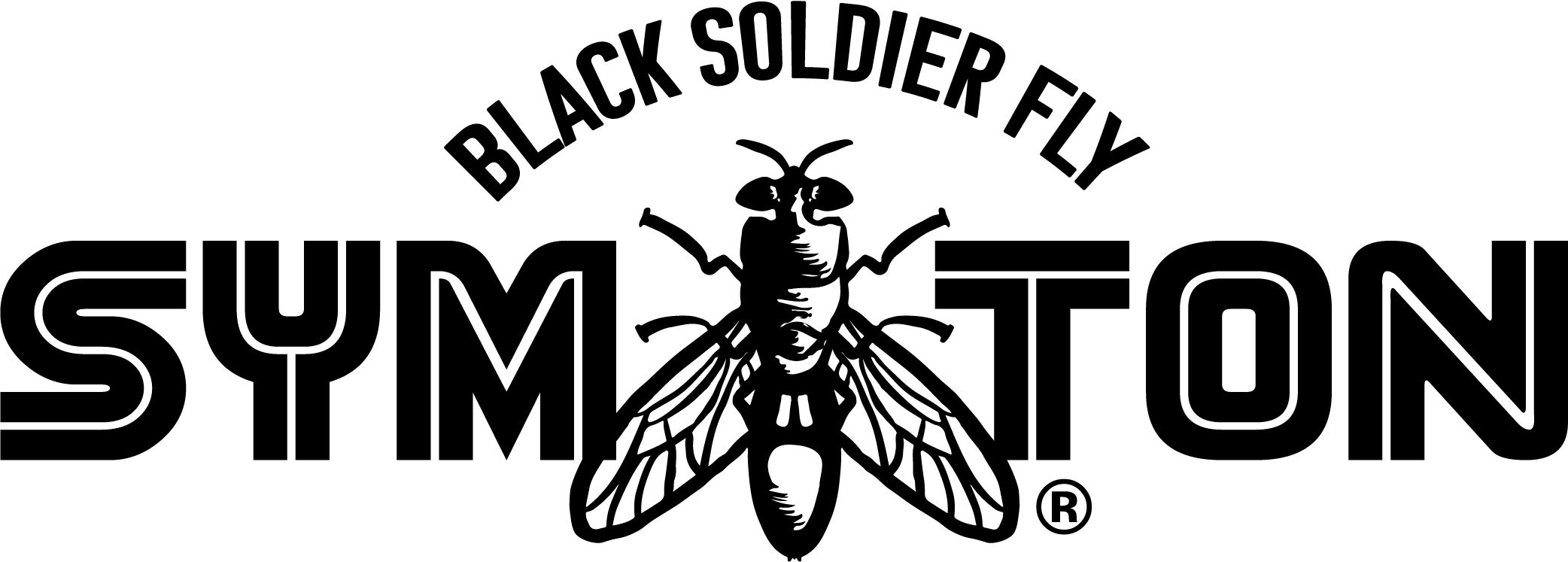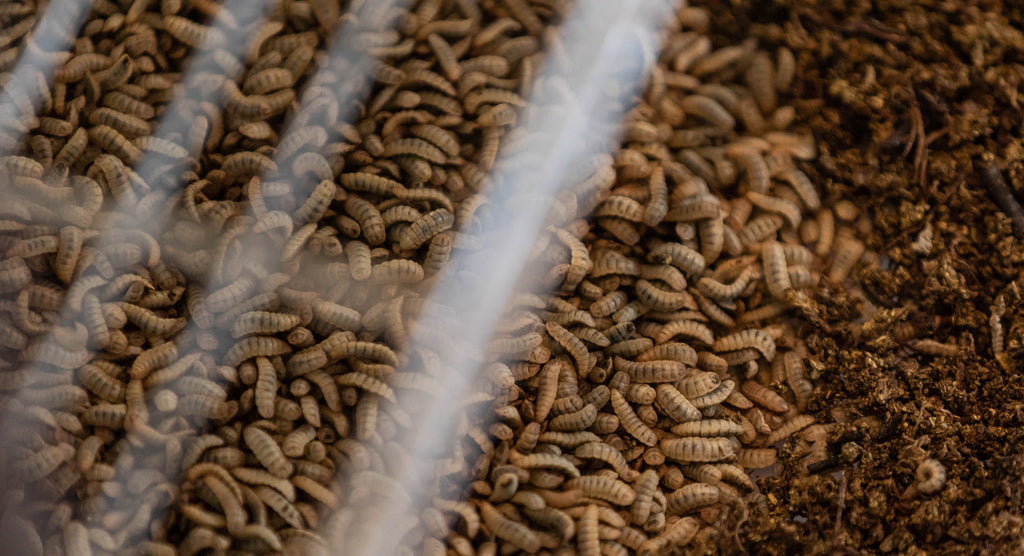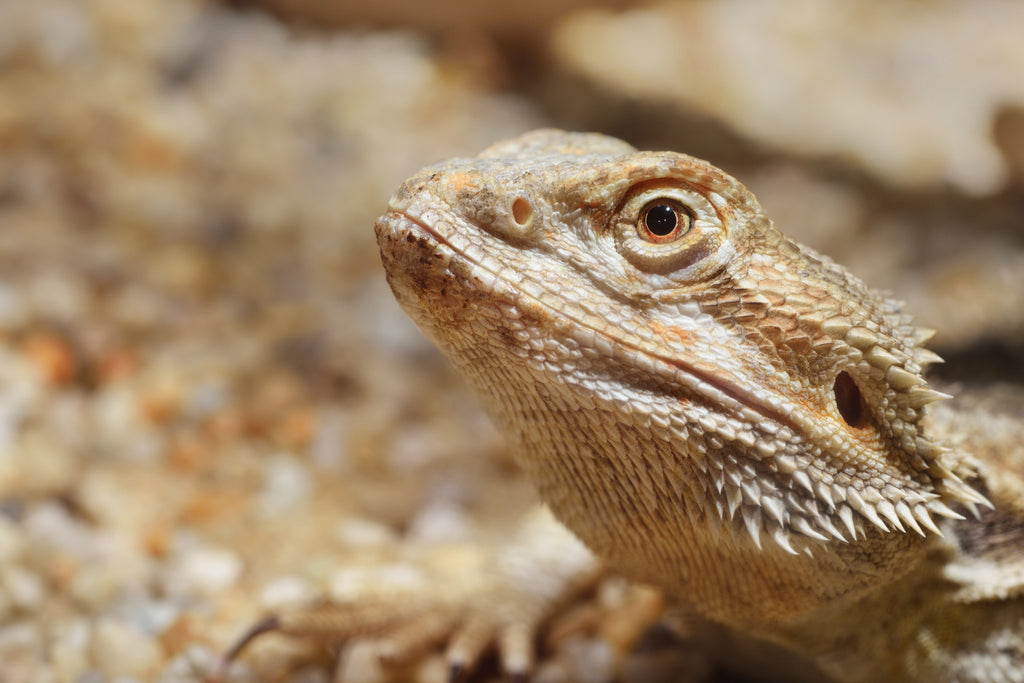Black soldier fly larvae (BSFL) are well known for their many nutritional benefits as staple feeder insects for exotic pets, but would you believe that their impact in the realm of sustainable waste management is their true calling card?
As we covered in last month’s Earth Day Blog Post
[read it here if you’re not caught up], at Symton we pride ourselves in doing everything we can to be a sustainable business with the greenest practices possible. We offer compost grade BSFL that many people purchase to start off their very own compost bins, or to revitalize existing ones. As a non-invasive species, BSFL can be sold and taken anywhere as long as the environment is hospitable to them. We truly stand behind these wonderful insects and all the great work they do to keep our Earth a happy place.
New research efforts using the Black Soldier Fly as a solution for waste management have yielded promising results. Several studies around the world have gained attention and intrigue from the scientific community, some of which are included in this article. More and more people are beginning to pay attention to the ways BSFL can be useful for environmental and economic issues such as waste management and other related practices in sustainability, outside of their nutritional benefits as a feeder insect. Researchers are taking a specific interest in BSFL due to their unique composting abilities, i.e. their ability to break down various forms of organic material into a new, greener byproduct
known as "frass". Black Soldier Fly Larvae can quickly break down initial waste by 50% in two weeks, under ideal conditions, far outpacing traditional methods of composting. (Amrul et. al, 2022). This makes them an excellent and invigorating addition to established composting operations. They are also proven champions among fellow insect composters. Check out our video where we face off BSFL vs. mealworms in a 24 hour burger eating challenge!
Below is a diagram that shows a simplified outline of the black soldier fly life cycle, specifically indicating where waste management can play an active role. This begins with the egg stage (BSF eggs) and culminates with fully grown adult flies (BSF House).
Figure 1: Generalized layout of BSF and where their byproduct goes (Amrul et. al, 2022)
Research has found BSFL to be proficient in breaking down organic waste from a variety of sources such as kitchen waste, animal waste, and human excremental waste. This is important because as waste builds up worldwide, threats also build up against human health, the ecosystem, and biodiversity. Some of these threats include things such as the contamination of water, air, and soil, and can also be a route for spreading pathogens. Food waste has also been reported to cause detrimental impacts on the environment via the methane gas emitted from landfills (Siddiqui et. al, 2022). Studies have also proven that BSFL “reduce the odorous compounds from poultry, swine, and dairy manures up to 87% or more” (Beskin et. al, 2018). Of course these numbers can vary depending on the type of material being broken down by the larvae, but overall their performance is impressive and has garnered international attention.
Black soldier fly consumption of food waste at 12, 24, and 48 hours
Another bonus to using BSFL for waste management is in their self-harvesting strategy. Essentially, as larvae begin to enter the pupating stage, they remove themselves from their frass by-product in order to find a safe place to emerge as the adult fly. This makes the process of obtaining frass free of the insect a smoother process that reduces the need for highly technical operational skills.
Overall, using BSFL in the composting process continues to be “beneficial to the circular economy and provides a sustainable operation for low- and middle-income countries” (Basri et. al, 2022). BSFL leaves a “low carbon footprint and are a non-disease vector species… they also reduce pathogen and other pest populations. Then from the perspective of businesses, [BSFL produces] valuable materials economically whilst requiring low water and land usage compared to other alternative protein sources” (Siddiqui et. al, 2022). Therefore, BSFL provides an accessible and lower-maintenance solution for potentially large-scale waste management initiatives.
In an increasingly urban environment, fungal and bacterial diseases aren’t the only problems we face as agriculturalists. Heavy metals intoxicate our soil, our waste, and our waters. However, BSFL boasts the super-power ability to accumulate heavy metals into their tissues, thereby removing it from the environment and preventing it from re-entering in their waste products.
In one study, large quantities of mercury were added to the BSFL feedstock. Over the next two weeks, the BSFL were observed to produce frass with low mercury levels below the European Union’s threshold values (Basri et. al, 2022). Results from this study mark a significant milestone in BSFL research, proving that one insect species has the capability to remove, or significantly reduce, heavy metals present in our waste streams.
Symton offers compost-grade larvae so you can easily set up your very own composting bin at home (
https://www.youtube.com/watch?v=NCZG7qL1a9Q) and begin your own personal waste management journey. You can dispose of food scraps using this bin, and prevent your waste from going straight to the landfill. According to Basri et. al, “solid waste generation is expected to rise due to rapid population growth. Worldwide humans are generating 1.3 billion tonnes of solid waste per year and it’s projected to increase to 3.4 billion tonnes by 2050, with food waste accounting for over half of all solid waste generated globally”. Help us in our goal to reduce these numbers, and make BSFL accessible to everyone as a means to participate in solutions for waste management.
Works Cited:
Amrul, Nur Fardilla, et al. “A Review of Organic Waste Treatment Using Black Soldier Fly (Hermetia Illucens).” Sustainability, vol. 14, no. 8, 2022, p. 4565, https://doi.org/10.3390/su14084565.
Basri, Noor Ezlin, et al. “Potential Applications of Frass Derived from Black Soldier Fly Larvae Treatment of Food Waste: A Review.” Foods, vol. 11, no. 17, 2022, p. 2664, https://doi.org/10.3390/foods11172664.
Choi, Sarah, and Neelah Hassanzadeh. BSFL Frass: A Novel Biofertilizer for Improving Plant Health While Minimizing Environmental Impact, 2019, static1.squarespace.com/static/ 5a63b41dd74cff19f40ee749/t/ 5db71f8468b83939b93f8d3c/ 1572282245292/sarah+and+neelah.pdf.
Lovett, G., Christenson, L. M., Groffman, P. M., Jones, C. G., Hart, J. E., & Mitchell, M. J. (2002). Insect defoliation and nitrogen cycling in forests: Laboratory, plot, and watershed studies indicate that most of the nitrogen released from forest foliage as a result of defoliation by insects is redistributed within the ecosystem, whereas only a small fraction of nitrogen is lost by leaching. BioScience, 52(4), 335-341
Siddiqui, Shahida Anusha, et al. “Black Soldier Fly Larvae (BSFL) and Their Affinity for Organic Waste Processing.” Waste Management, vol. 140, 1 Mar. 2022, pp. 1–13, https://doi.org/10.1016/j.wasman.2021.12.044.
Research by: Eva Rudow and Bri Turek











